Gluten-Free Chocolate Chip Cookies
This post may contain affiliate links. Read my full disclosure policy.
If you’re on the hunt for a gluten-free chocolate chip cookie that taste just like the real deal, look no further—it’s almost hard to believe these are gluten-free!
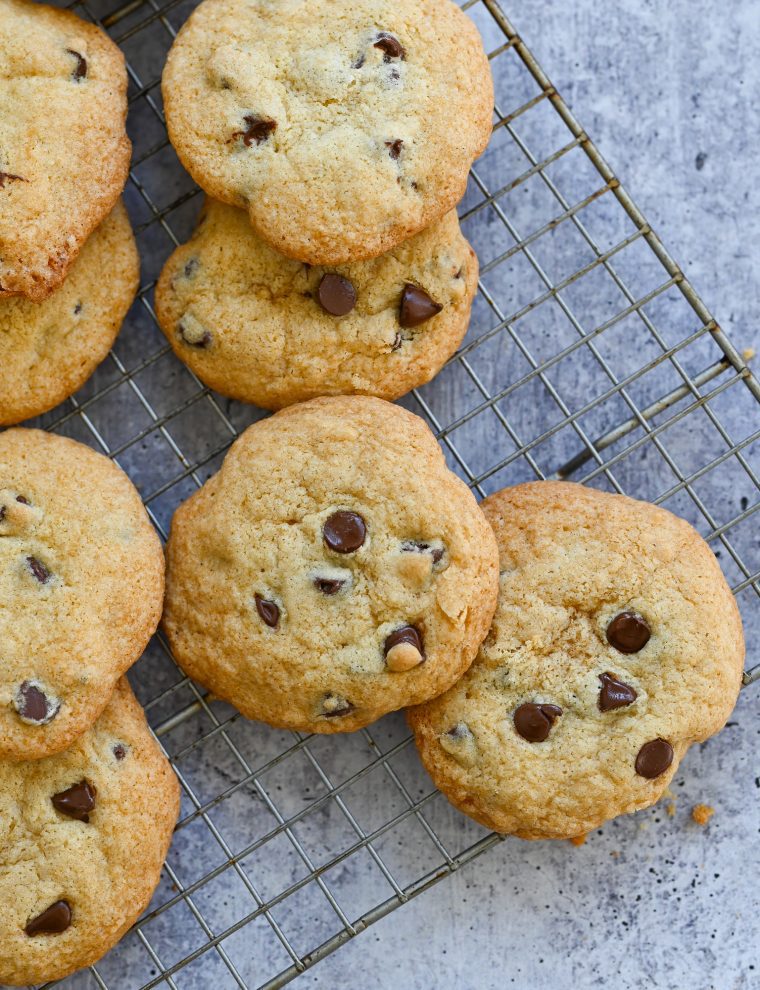
Being both a chef and a mom, I’m well-acquainted with kitchen challenges, especially those revolving around my kids’ ever-shifting preferences. (They sure know how to keep me on my toes!) Recently, my daughter switched to a gluten-free diet, inspiring me to dive into the world of gluten-free baking. Chocolate chip cookies—a household favorite—were my first experiment. I tried numerous recipes, but all too often, they fell short, primarily due to the gritty texture that results when baking with gluten-free flour. But, after much trial and error, I’m thrilled to share a gluten-free chocolate chip cookie recipe that stands out from the rest.
Table of Contents
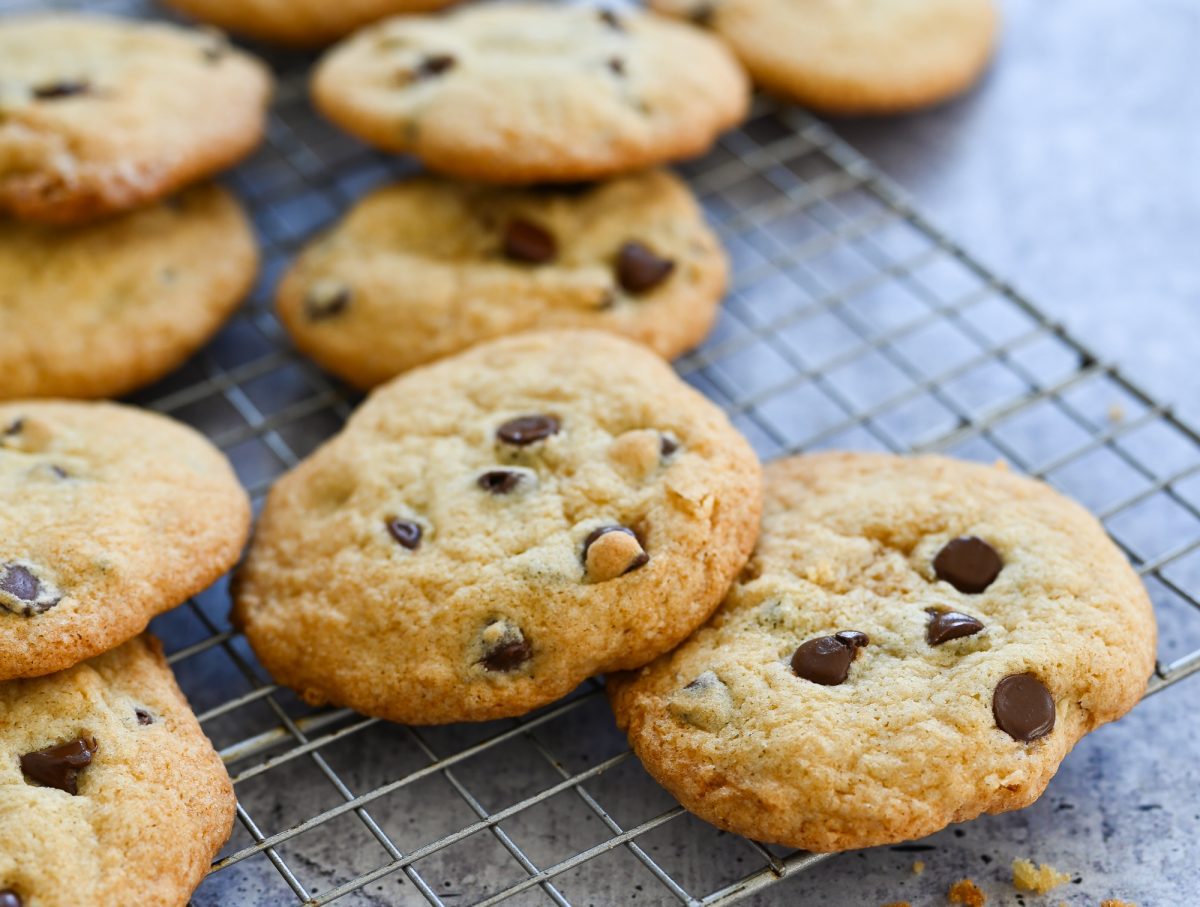
While it’s impossible to completely eliminate the typical grittiness of gluten-free baked goods, this recipe comes remarkably close. In fact, they so closely resemble traditional chocolate chip cookies, it’s almost hard to believe they’re gluten-free. I’d happily serve them to anyone, whether they’re following a gluten-free diet or not. If you enjoy these cookies, don’t miss my coconut variation—it’s a subtle but delicious twist on this already fabulous recipe.
Step-by-Step Instructions
In a medium bowl, whisk together the gluten-free flour, baking powder, baking soda, and salt.
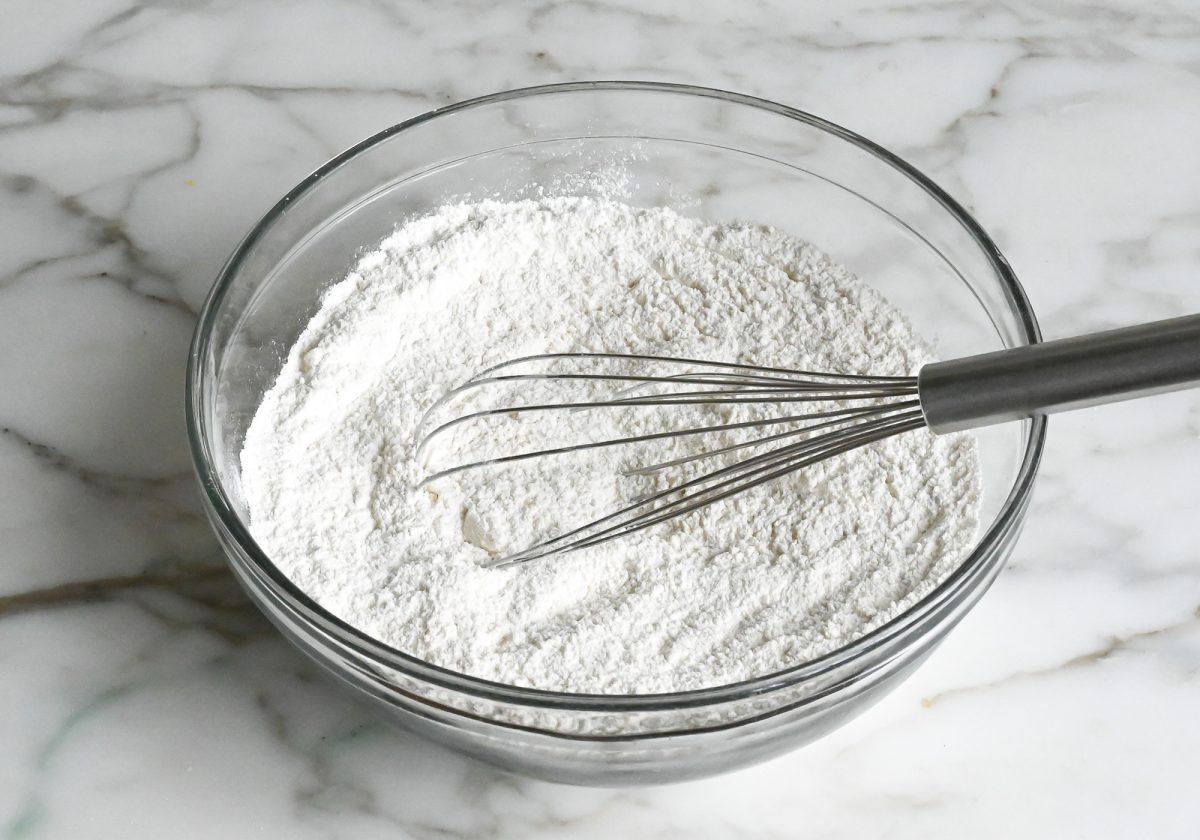
In the bowl of an electric mixer fitted with the paddle attachment or beaters, combine the butter and both sugars.
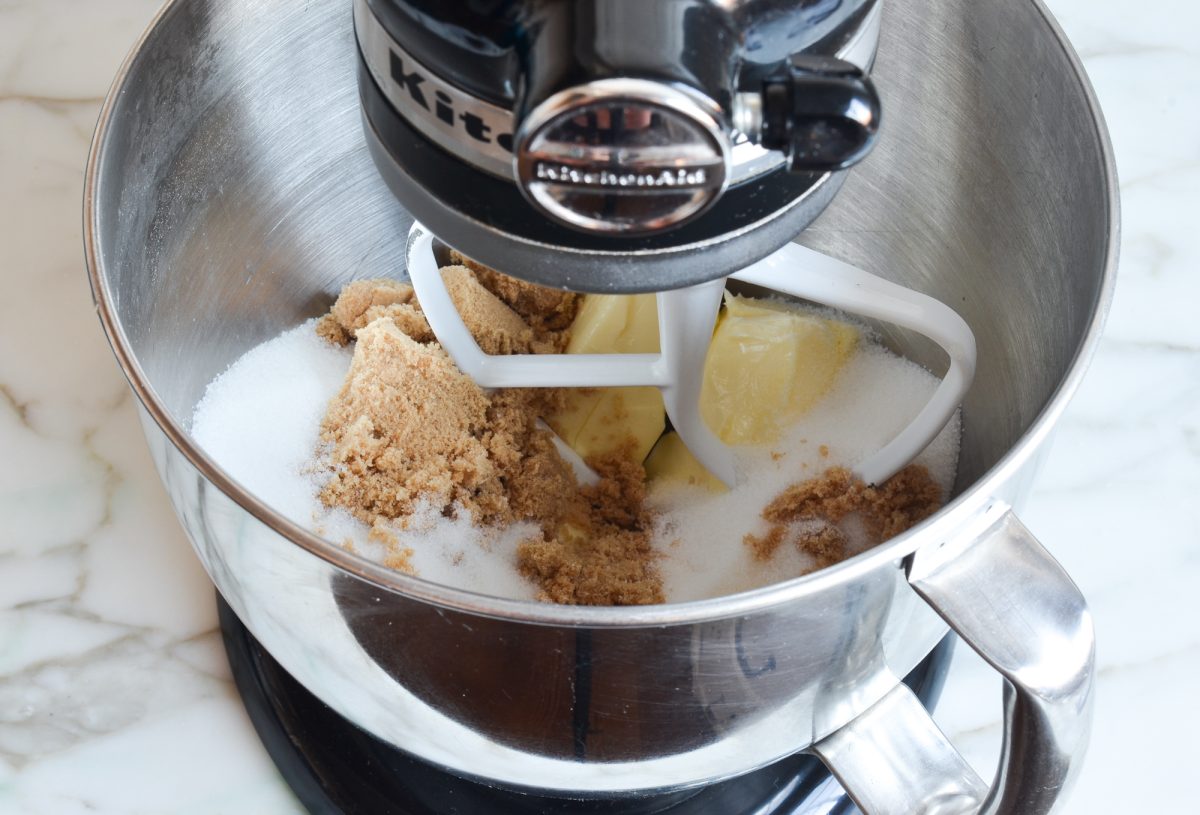
Beat on medium speed (or high speed if using a hand mixer) for 4 minutes, or until light and fluffy, scraping down the sides and bottom of the bowl as necessary.
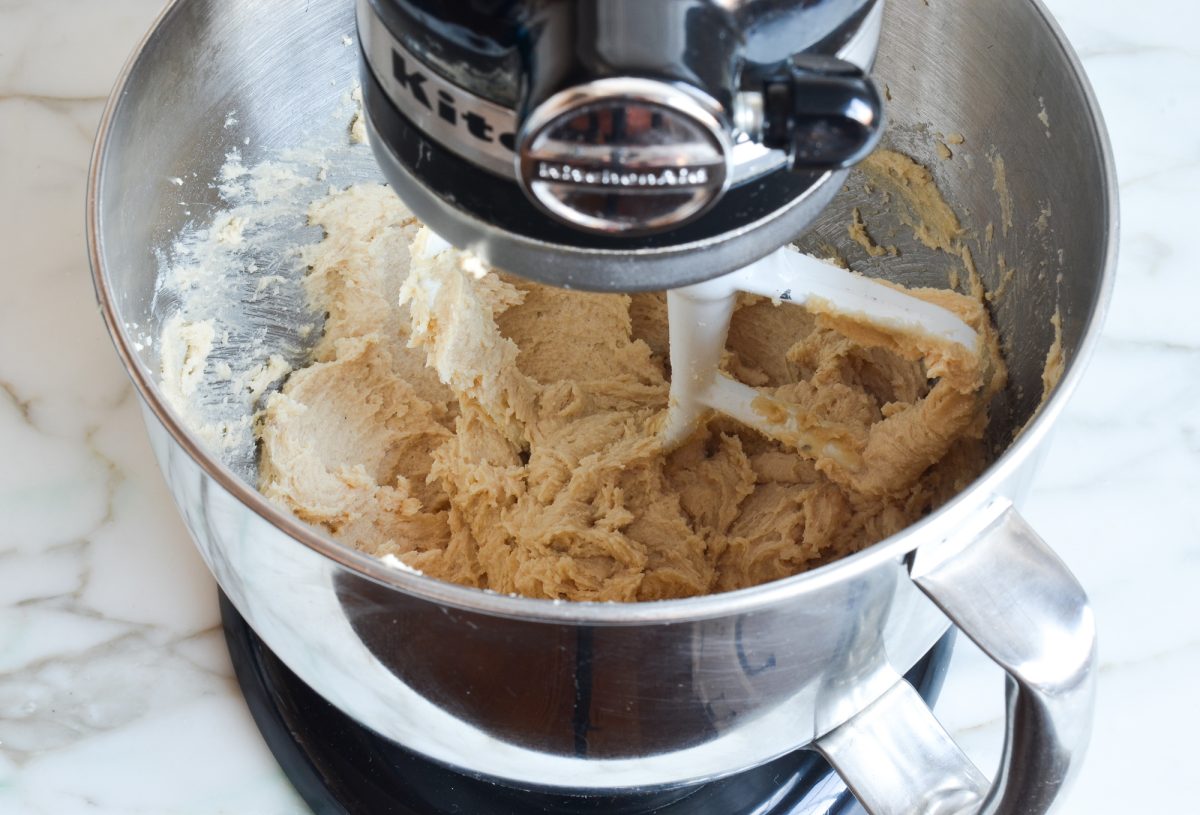
Add the vanilla and eggs.
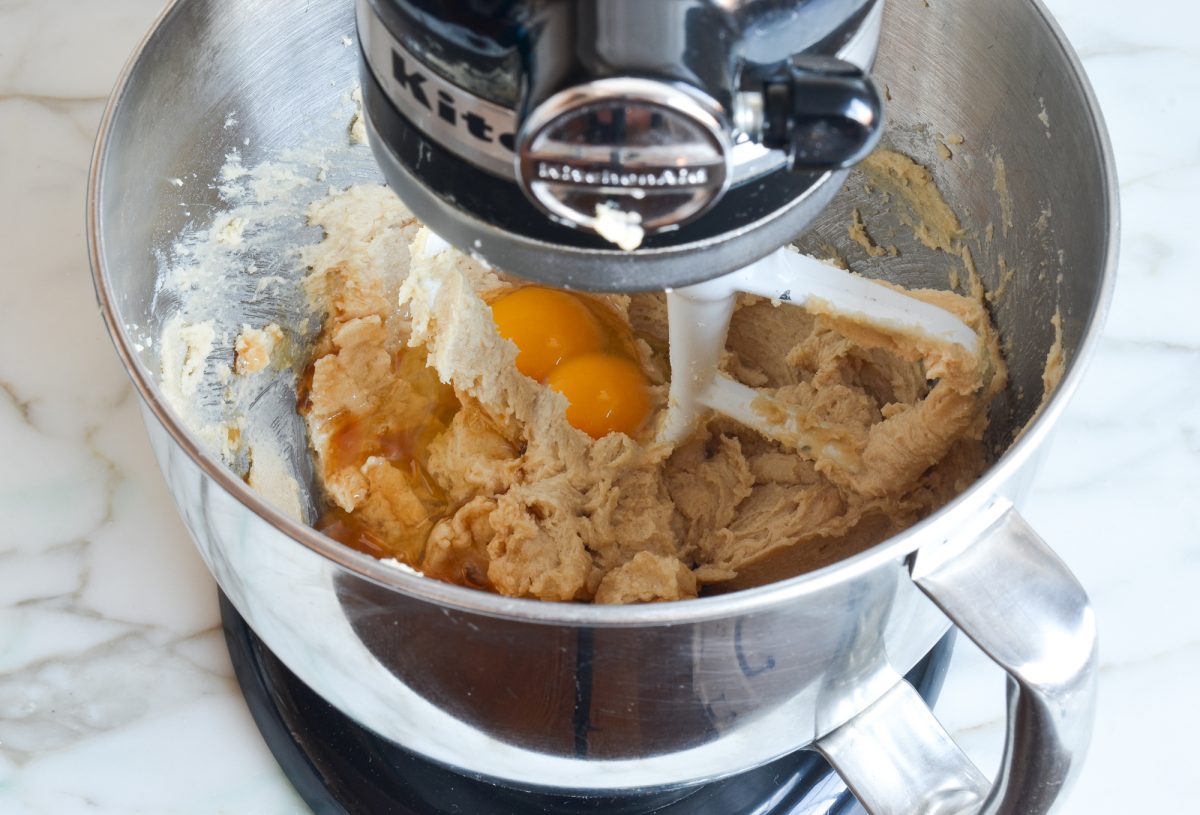
Beat for 2 minutes more.
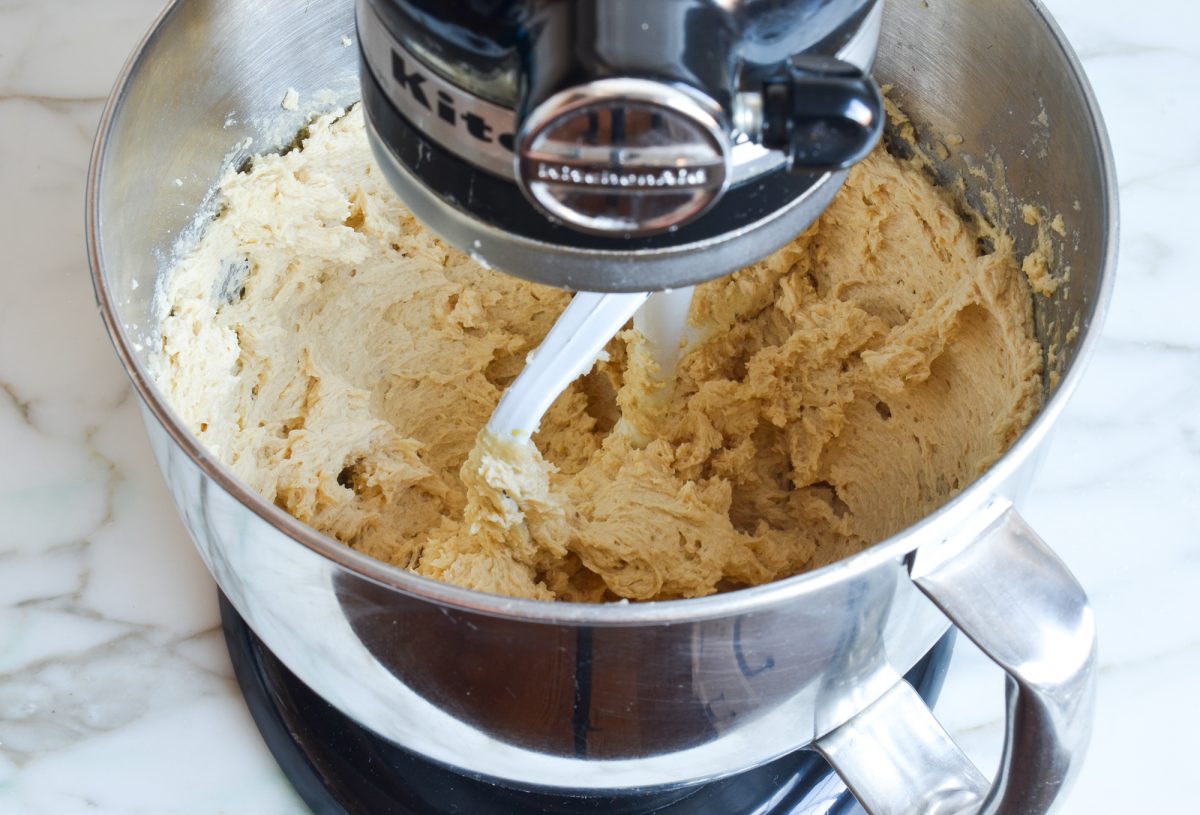
Add the dry ingredients and water.
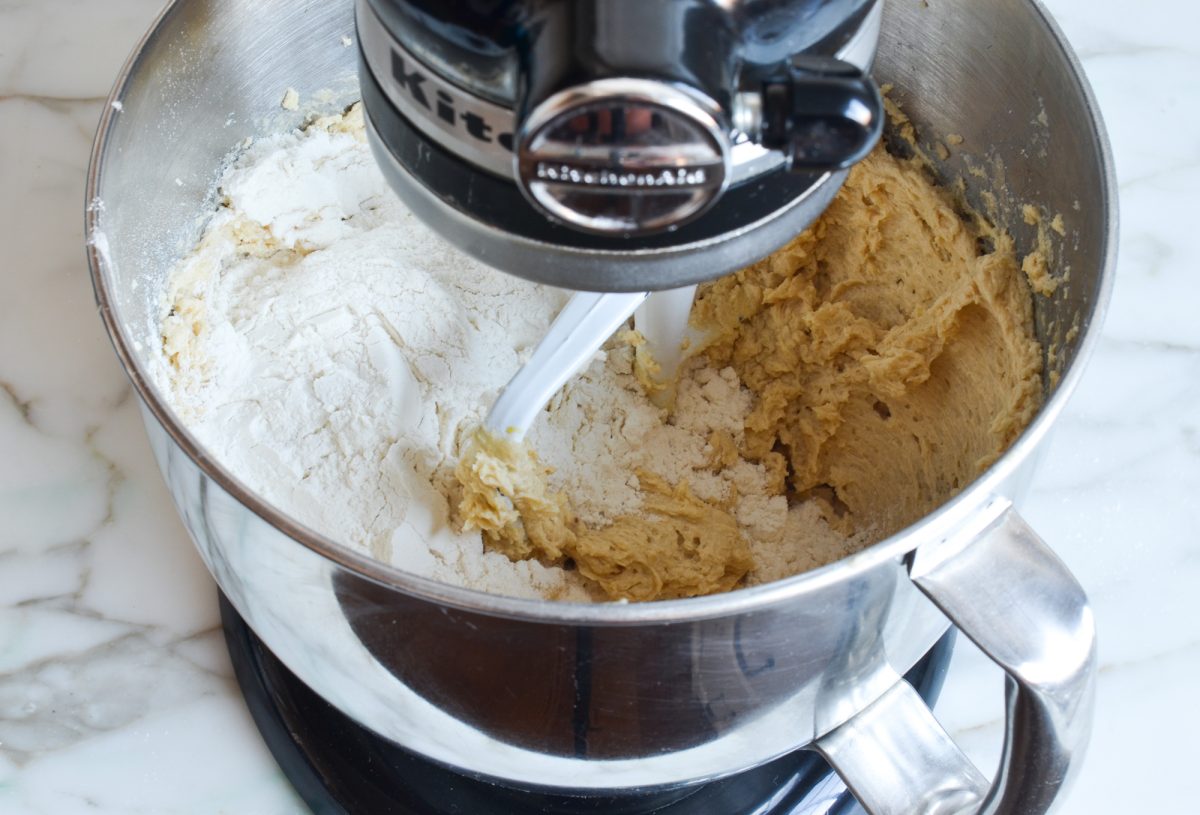
Mix on low speed until the dough is uniform.
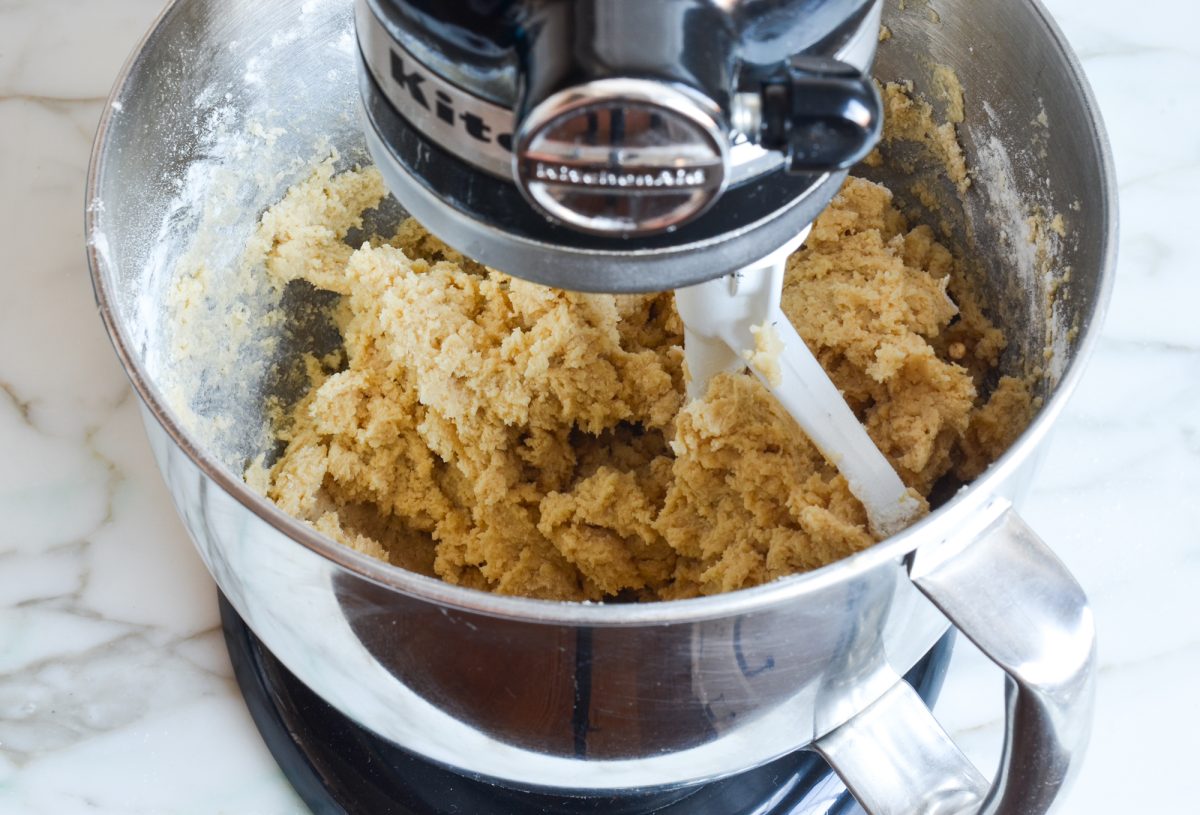
Mix in the chocolate chips.
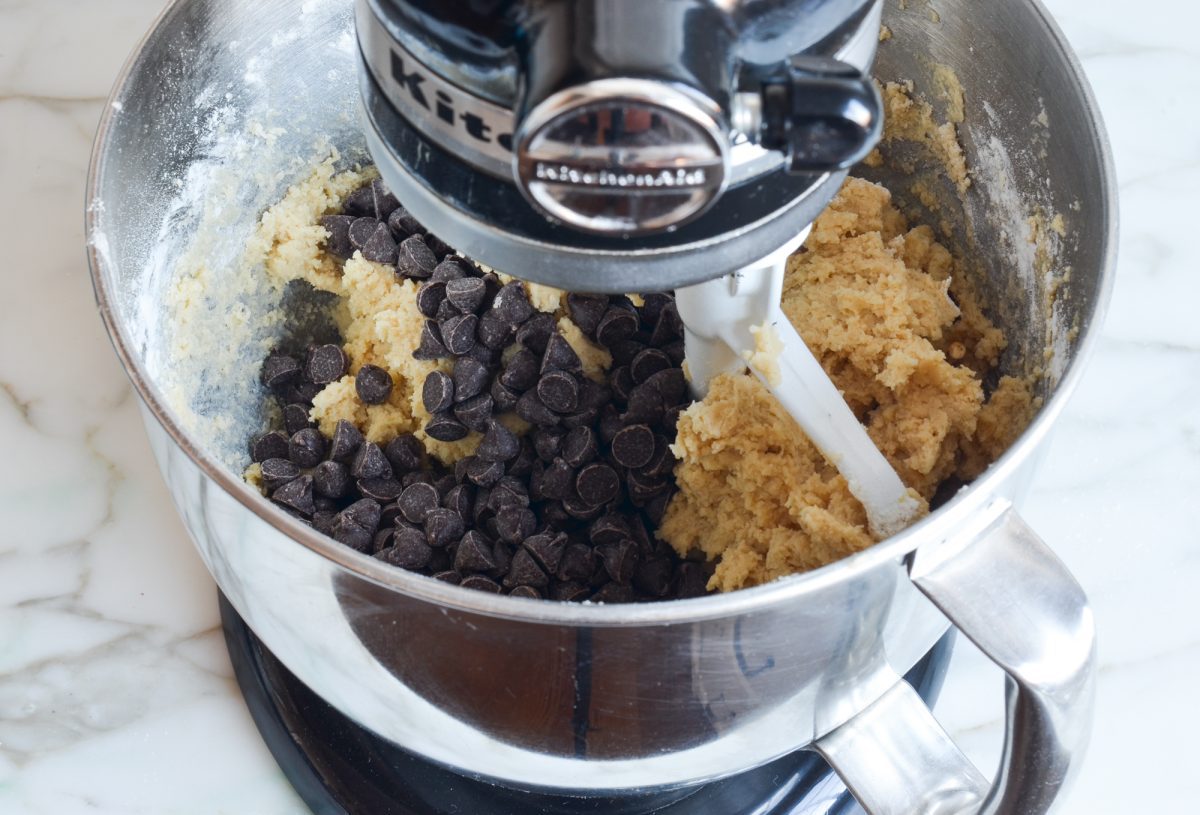
Cover the bowl with plastic wrap or scrape the dough into an airtight container and let rest in the refrigerator until firm, a few hours or overnight. (If you don’t want to wait, form the dough into 1.5-inch balls on the baking sheets as instructed below, and chill in the freezer until firm, about 20 minutes.)
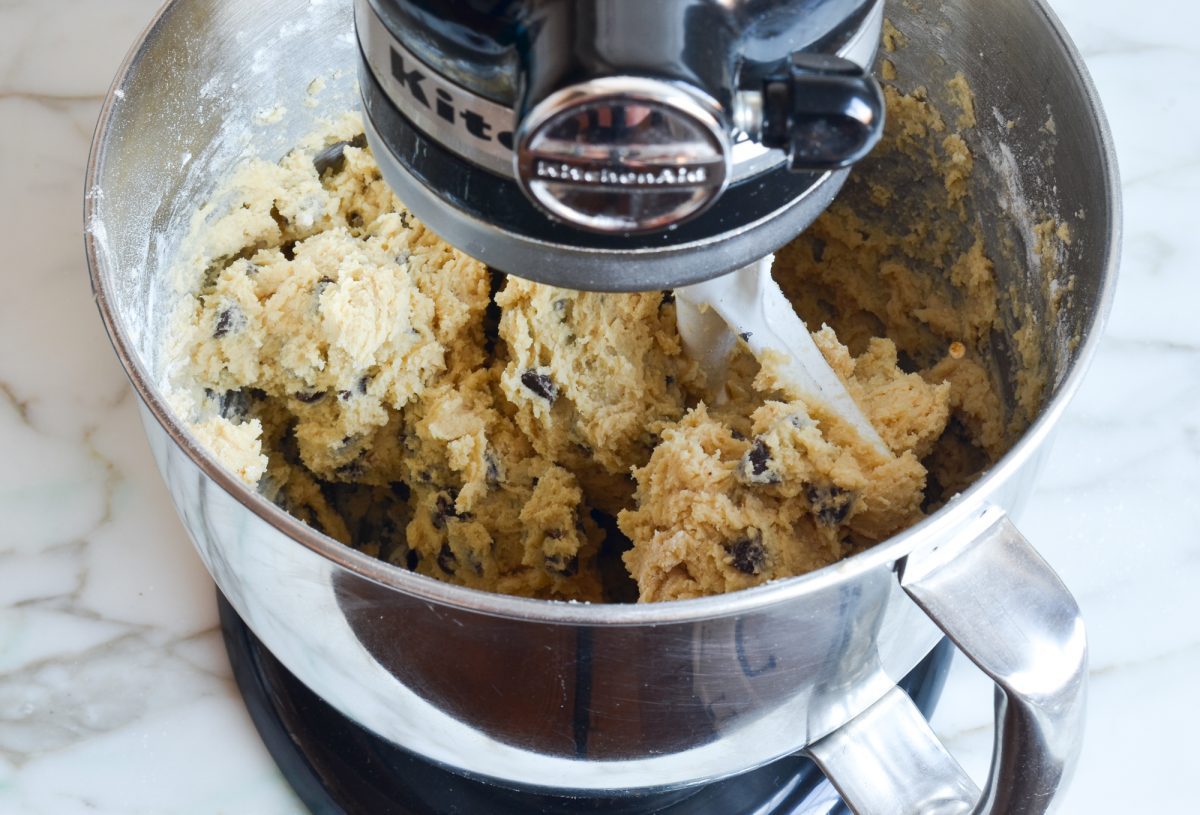
Preheat the oven to 350°F and set a rack in the middle position. Line a 13 x 18-inch baking sheet with parchment paper.
Drop the dough in firmly packed 1.5-inch balls onto the prepared baking sheet, spacing them about 3 inches apart.
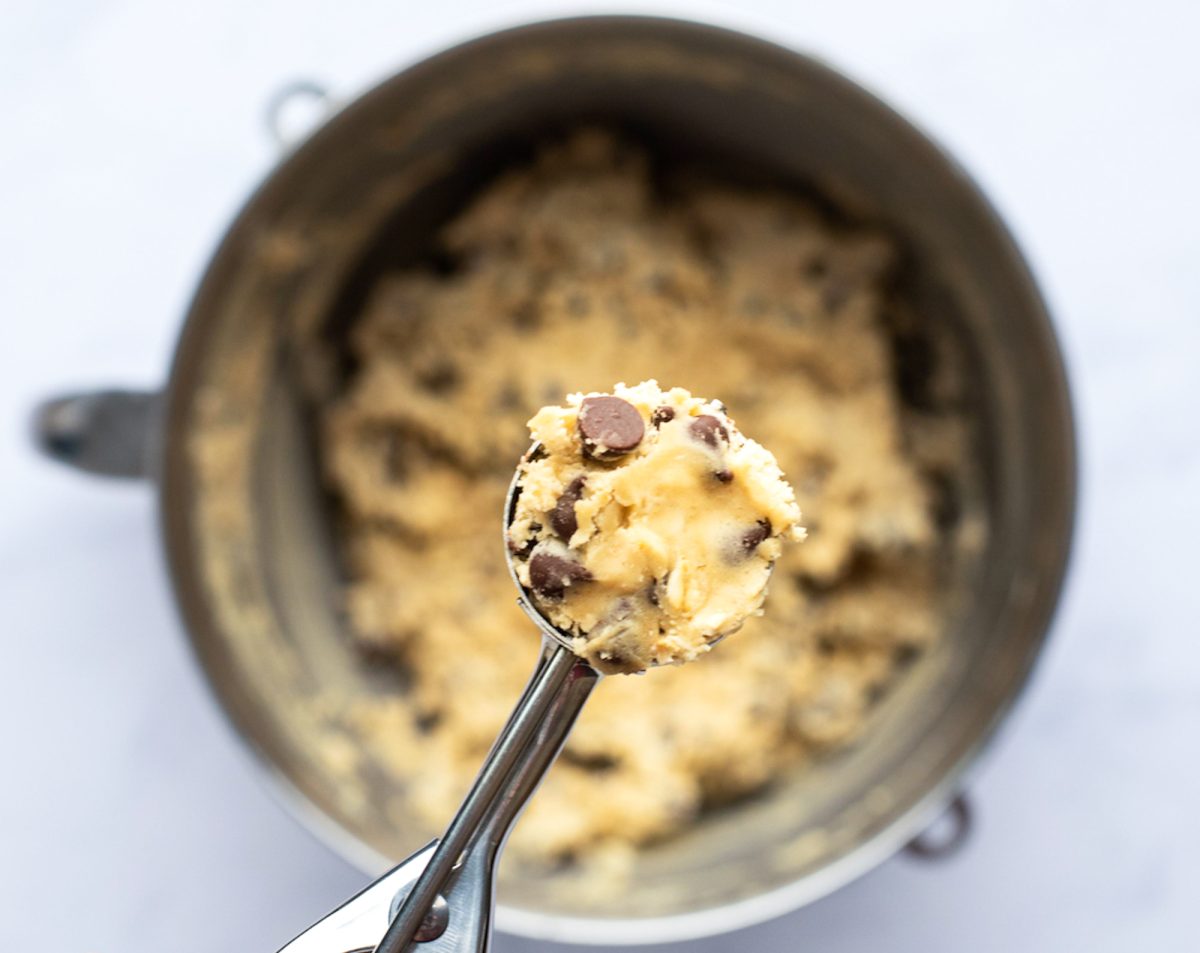
Bake for 13 to 15 minutes, until golden around the edges but still soft and pale in the center. Let cool for a few minutes on the baking sheet, then transfer to a wire rack to cool completely.
Frequently Asked Questions
A: Gluten-free baked goods often have a gritty texture due to the types of flour used. Traditional wheat flour, which contains gluten, has a smooth texture. In contrast, many gluten-free flours, such as rice flour or almond flour, have a coarser, grittier texture. To minimize this, you can use a blend of gluten-free flours.
A: Yes but be sure to check that the chocolate chips are gluten-free. Some chocolate chips may be processed in facilities that also process wheat products, leading to cross-contamination. Always read the labels to ensure that the chocolate chips are certified gluten-free.
A: Gluten-free all-purpose flour is a blend of gluten-free flours and starches designed to replace wheat flour in recipes. However, it doesn’t typically include binders like xanthan gum or guar gum, which means you may need to add them separately to provide structure and elasticity. On the other hand, gluten-free measure-for-measure flour is formulated to be a direct replacement for regular flour in recipes, as it already includes binders.
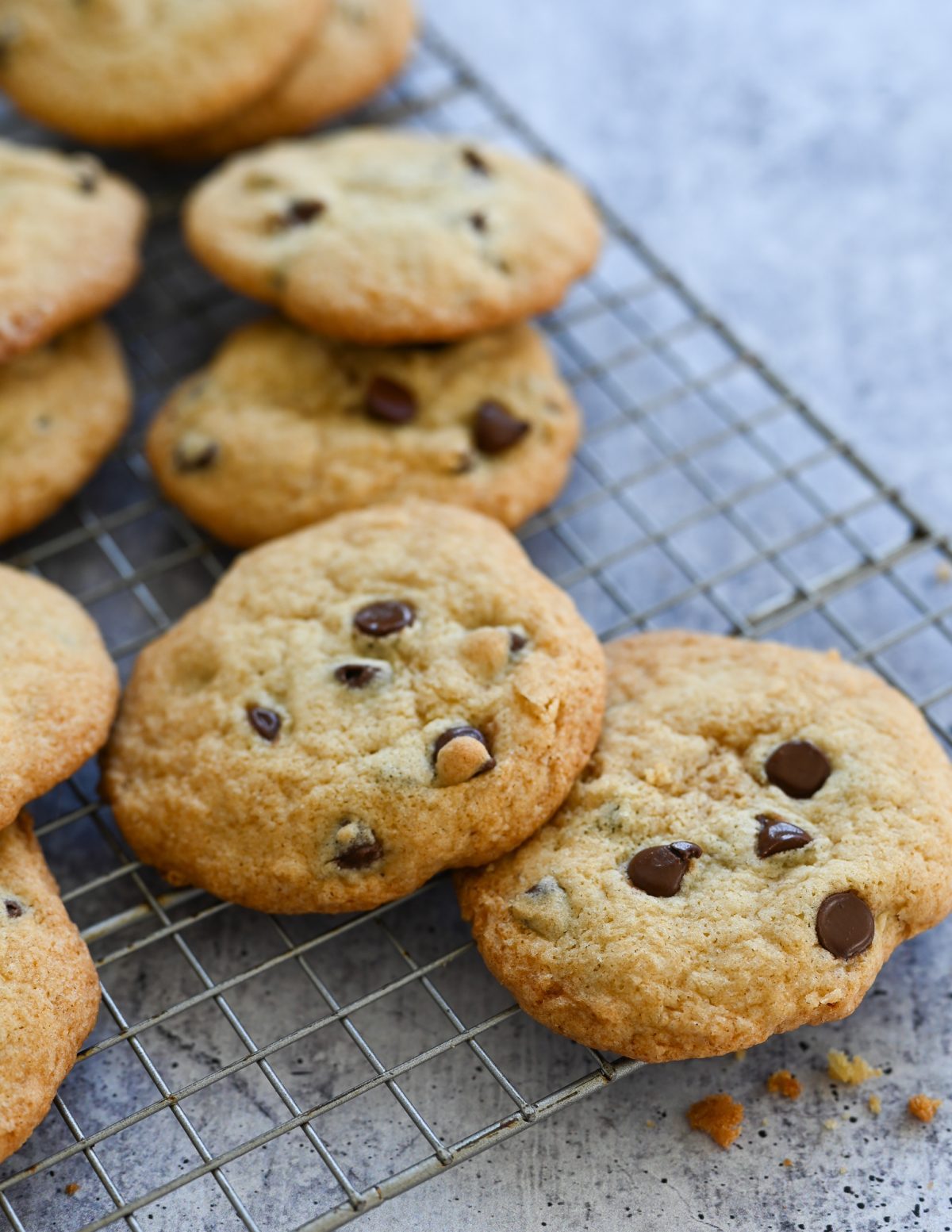
You May Also Like
Gluten-Free Chocolate Chip Cookies
If you’re on the hunt for a gluten-free chocolate chip cookie that taste just like the real deal, look no further—it’s almost hard to believe these are gluten-free!
Ingredients
- 2¾ cups gluten-free measure-for-measure flour, spooned into measuring cup and leveled off (see note)
- 1½ teaspoons baking powder
- 1 teaspoon baking soda
- 1 teaspoon salt
- 2 sticks (1 cup) unsalted butter, at room temperature
- ¾ cup granulated sugar
- ¾ cup (packed) light or dark brown sugar
- 2 teaspoons vanilla extract
- 2 large eggs
- 2 tablespoons water
- 1⅓ cups (9 oz) semi-sweet chocolate chips, with additional chips set aside for dotting on top of the dough balls just before baking
Instructions
- In a medium bowl, whisk together the flour, baking powder, baking soda, and salt.
- In the bowl of an electric mixer fitted with the paddle attachment or beaters, beat the butter and both sugars on medium speed (or high speed if using a hand mixer) for 4 minutes, or until light and fluffy, scraping down the sides and bottom of the bowl as necessary. Add the vanilla and eggs and beat for 2 minutes more. Scrape down the bowl.
- Add the dry ingredients and water and beat on low speed until the dough is uniform. Mix in the chocolate chips.
- Cover the bowl with plastic wrap or scrape the dough into an airtight container and let rest in the refrigerator until firm, a few hours or overnight. (Alternatively, if you don't want to wait, form the dough into 1.5-inch balls, place on the baking sheets as instructed below, and chill in the freezer until firm, about 20 minutes.)
- Preheat the oven to 350°F and set a rack in the middle position. Line a 13 x 18-inch baking sheet with parchment paper.
- Drop the dough in firmly packed 1.5-inch balls onto the prepared baking sheet, spacing them about 3 inches apart. If you'd like the cookies to look extra chocolatey and tempting after baking, press a few additional chocolate chips gently onto the top of each dough ball. Bake for 13 to 15 minutes, until golden around the edges but still soft and pale in the center. Let cool for a few minutes on the baking sheet, then transfer to a wire rack to cool completely. Repeat with the remaining cookie dough, refrigerating the dough between batches. The cookies will keep in an airtight container at room temperature for up to 3 days.
- Freezer-Friendly Instructions: The cookie dough can be frozen for up to 3 months. To freeze, roll the dough into balls, let set on a baking sheet in the freezer for about 1 hour, then place in a sealable bag and press out as much air as possible. Bake as needed directly from the freezer. (Allow 1 to 2 minutes longer in the oven.) The baked cookies can also be frozen for up to 3 months. Let the cookies cool completely and store in an airtight container separating layers with parchment paper or aluminum foil. Before serving, remove the cookies from the container and let them come to room temperature.
- Note: When shopping for gluten-free flour, you'll typically find two primary options: "gluten-free all-purpose flour" and "gluten-free measure-for-measure flour." For this recipe, opt for the measure-for-measure variety (I use King Arthur), as it's a one-to-one substitute for regular flour, including necessary binders that improve the texture of baked goods.
Nutrition Information
Powered by ![]()
- Per serving (20 servings)
- Serving size: 2 cookies
- Calories: 264
- Fat: 14 g
- Saturated fat: 8 g
- Carbohydrates: 34 g
- Sugar: 20 g
- Fiber: 1 g
- Protein: 3 g
- Sodium: 143 mg
- Cholesterol: 143 mg
This website is written and produced for informational purposes only. I am not a certified nutritionist and the nutritional data on this site has not been evaluated or approved by a nutritionist or the Food and Drug Administration. Nutritional information is offered as a courtesy and should not be construed as a guarantee. The data is calculated through an online nutritional calculator, Edamam.com. Although I do my best to provide accurate nutritional information, these figures should be considered estimates only. Varying factors such as product types or brands purchased, natural fluctuations in fresh produce, and the way ingredients are processed change the effective nutritional information in any given recipe. Furthermore, different online calculators provide different results depending on their own nutrition fact sources and algorithms. To obtain the most accurate nutritional information in a given recipe, you should calculate the nutritional information with the actual ingredients used in your recipe, using your preferred nutrition calculator.
Gluten-Free Adaptable Note
To the best of my knowledge, all of the ingredients used in this recipe are gluten-free or widely available in gluten-free versions. There is hidden gluten in many foods; if you're following a gluten-free diet or cooking for someone with gluten allergies, always read the labels of your ingredients to verify that they are gluten-free.

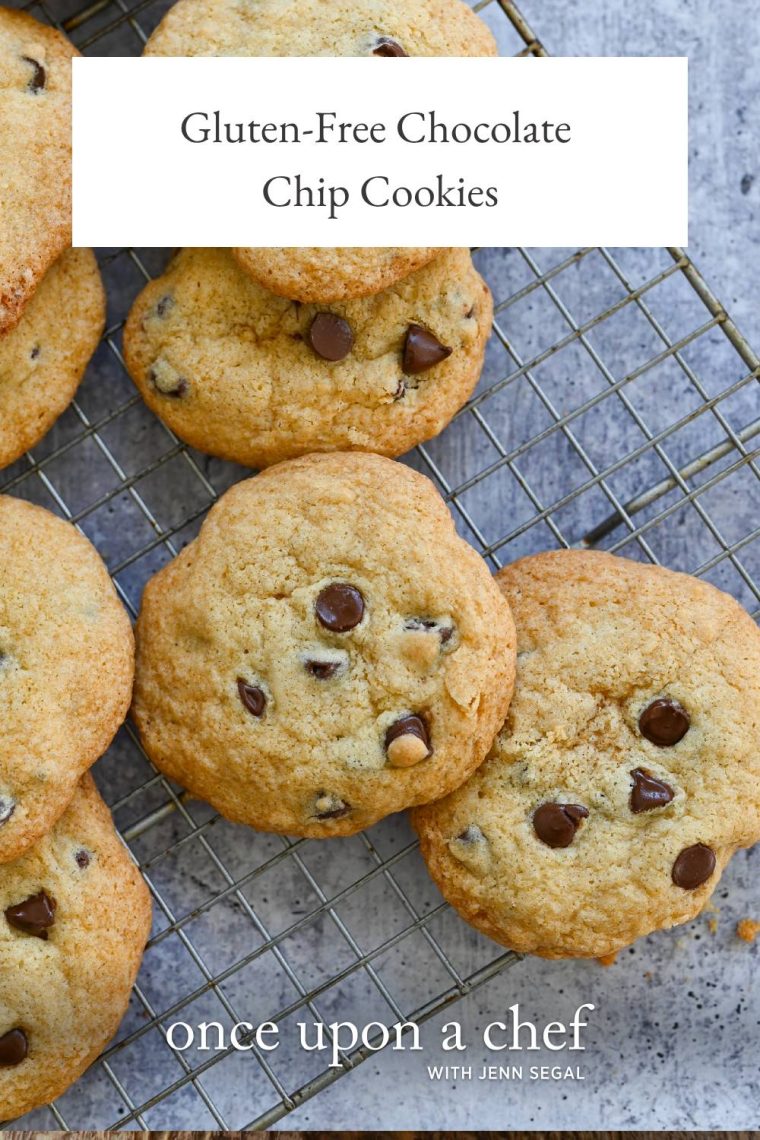
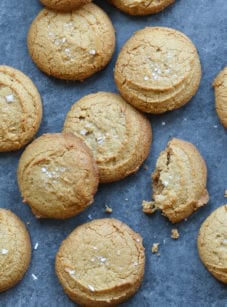
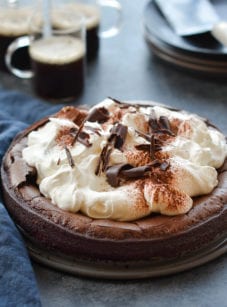
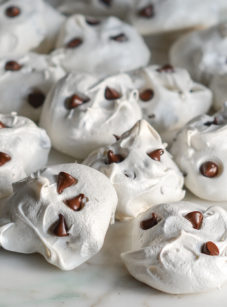

Add a Comment